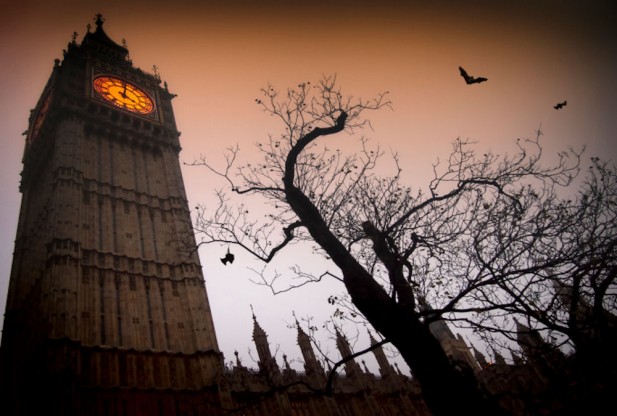
© Thinkstock.com
Because of an unusually cold spring and an insect shortage this summer, conservationists are concerned bat numbers could continue to suffer this year. Based on the latest figures from Britain's National Bat Monitoring Programme (NBMP), the annual bat breeding season got off to a slow start due to unseasonable weather earlier this year.
Dr. Kate Barlow, Head of Monitoring at the
Bat Conservation Trust, said, "After 2 years of long, wet, winters and a particularly late and cold start to summer this year, the outlook isn't too promising for our bats. The most recent results from the National Bat Monitoring Programme showed that there were fewer bats were counted in 2012 than in 2011 for most species monitored."
Dr. Barlow added that 2013 saw the coldest March in 50 years and summer got off to such a late start many of the species are struggling. "This year Britain's bats need all the help they get," she said.
Further adding to the bat recovery struggle is the fact that winged insect numbers are also down. So on top of a cold spring and delayed summer, several species may face shortages in food supply, especially those that rely on moths, according to a National Trust report released last month.
"Bats are long-lived for small mammals, some species routinely live up to 20 years. All our bats produce only one baby a year (twins are very rare) so a few years of bad weather could have dramatic impact on numbers of bats if they are unable to find enough food to allow them to breed successfully," said Dr. Barlow.
Several species of bats in Britain are listed as European Priority, highlighted as the most at risk species in Europe with numbers sharply declining over the past 100 years. This decline has been attributed to several factors, which include climate shifts, changes in farming and land use, pesticides and in some cases persecution.
Philip Briggs of the Bat Conservation Trust explained to
BBC that breeding in bats appeared to be reduced or delayed last year, likely due to the cold spring and exceptionally wet summer.
"Female bats often skip a year with breeding, or would certainly delay breeding... This can mean that if a baby's born quite late in the summer, they've got less time to feed up and get to full size and strength before they go into hibernation, which could impact on their overwinter survival," he said.
Briggs speculated this year's breeding season could once again be delayed due to the cold spring. Although, he added, "I suppose if we continue with the current good weather this could help improve breeding success and survival throughout the summer, but we'll just have to see how things go."
Postive newsBritish law protects bats and their roost sites, which could help keep a lifeline for bat colonies that have already managed to survive unseasonable weather conditions. Protecting roosts allows for future security of these threatened creatures.
Over the past 15 years, the NBMP has also found population trends are on the increase or have remained stable for all of the 10 species that are surveyed. The relatively recent bat population increases came after a record decline was seen in the second half of the 20th century and the positive trends reported over the past 15 years are not affected by the recent low reported bat numbers. However, the group maintains bad weather over the past few years could spell doom for bat populations, especially if the seasons continue to remain unseasonable.
The NBMP is always looking for members to help count bat populations. Those in Britain who are interested should visit the group's site
www.bats.org.uk/nbmp. Those who spot bats during the daytime that appear to be injured are urged to also call the Bat Helpline at 0845 1300 228.
By the numbersIn 2012, the NBMP, with the help of volunteers, counted a total of 704 summer roosts of seven different species. Overall, numbers were in decline for six of the seven species.
Activity levels of four of the bat species have been monitored by volunteers as part of a summer bat detector survey, carried out at 243 sites across the UK in 2012. Overall activity levels of all species were lower than 2011 levels.
Also, activity levels of all four species monitored through the Field Survey were lower in 2012 compared to 2011. Still, the group believes this drop has not affected the overall population trends for the period of monitoring.
In monitoring of several species - lesser horseshoe bat,
Natterer's bat, common pipistrelle, soprano pipistrelle, serotine and
brown long-eared bat - roost counts were also found in decline in 2012 over 2011 totals. Only the greater horseshoe bat had not suffered any losses, according to the NBMP.
Seventeen species of bats are found in the UK, including the rare
Bechstein's bat and the
Daubenton's bat, also known as the "water bat," because it will scoop insects up from water surfaces.
Reader Comments
to our Newsletter